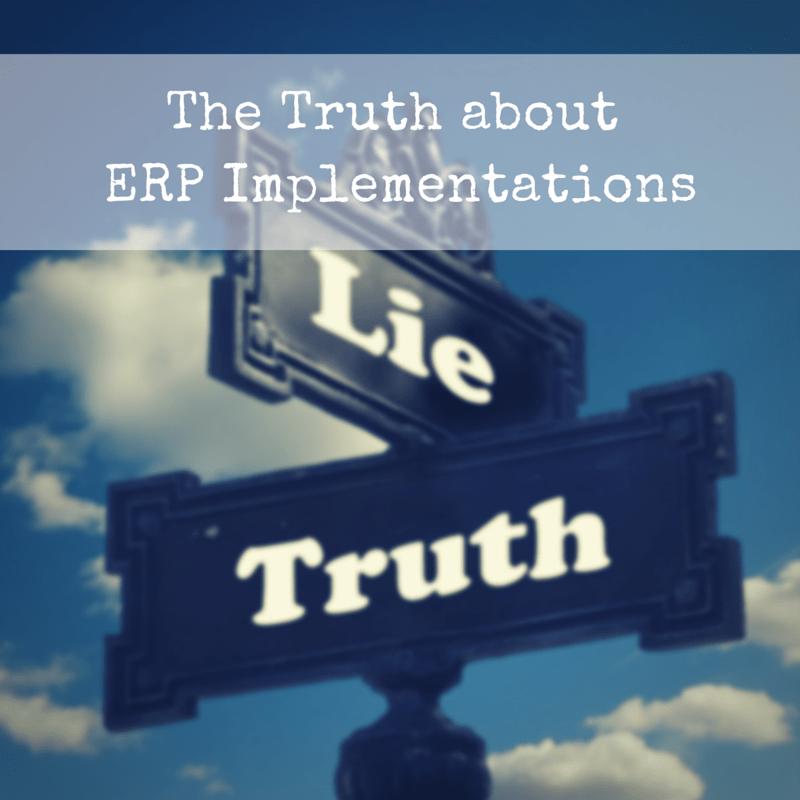User Training for New ERP Implementation – Done Right!
User Training for New ERP Implementation – Done Right!
In many of my previous articles, I repeatedly mentioned the term “user resistance” when it came to implementing a new software solution at a company (no matter its size). I tend to put quite a bit of focus on user resistance since this happens all too often at companies and it can easily be stopped (with a bit of work of course)!
We keep hearing about how ERP implementations are such disasters and how they always go way over budget and surpass the expected time frame. In these cases, it’s only normal to point the finger at the IT Provider. However, it’s super important to understand that a full ERP implementation project is a JOINT project. Collaboration is not optional – it is absolutely necessary in order to implement an ERP system on time, within budget (so long as the ERP Provider provided all possible costs upfront), and hassle-free.
Therefore, E-V-E-R-Y-O-N-E, including the management team, system users (employees) and IT Provider, are responsible for the outcome of this project. Why is this so? An ERP implementation can entail tons of changes for the company; new procedures, a new formal, disciplined environment, new standardized processes and new system functionalities and features. Change can be scary for many people. All of these changes can cause panic, fear and stress at the office, which is when employees tend to start resisting the new software system (and all the changes that come with it). Therefore, it’s everyone’s duty to ensure stress levels are reduced and the implementation plan of action stays on schedule.
A critical component in this phase is user training. Unfortunately, many companies tend to opt out of User Training and Support packages (which are additional costs). In my experience, companies who opt out of any user training and support encounter problems right from the get-go; it could be user resistance, too many errors due to having employees use the system wrong, etc. In this case, the chance of failure of the ERP implementation is quite high.
So, I’m here to tell you that ERP implementations do NOT have to be such disasters and headaches. They can go smoothly, stay within budget and time frame, by following the steps below:
- Explain, way before the system implementation, why management has decided to transition from the old system to the new one. What were some of the key reasons behind this decision? What can this new ERP system offer that the old one can’t? What are the improvements that management is planning to gain from this upgrade? How will this new system help employees (the users) with their daily tasks and projects? What immediate benefits will they (the users) see? What are the long-term benefits? Share as much as possible with the team so they can fully understand why this system will be better for the company as a whole.
- Create a training plan right from the get-go. This plan should begin pre-implementation and go on past the go-live date. Small training introductions to modules can begin pre-implementation and a more in-depth training schedule can continue long after the Go-Live date. This plan should always be respected and followed.
- Ensure that in this plan, there are several different training options for the employees (users). Not everyone learns the same way; some prefer to read documentation on the system, others prefer training done in a small group, and others might prefer one-on-one training. Make sure everyone is getting the proper attention, education and training they need so that they can be using the system the right way, in order to see real benefits.
- Putting together a small internal implementation team (of about 5 employees or less) that will manage and overlook the entire ERP project from start to finish. This group should be the first team to be trained in using the system so that even an internal team will be able to assist users with the software.
- Provide enough support and encouragement for all system users. This support and encouragement should come from both the IT Provider (with emphasis on support) and the company’s management team (with emphasis on encouragement). Management should remain unified in the support of the project throughout this time and should encourage their employees to not give up and to keep learning all they can about the new system and get accustomed to new processes. The IT Provider should also be available for any support that users may need in the coming months and years. The go-live date does not mean that the IT Provider’s job is done – this job is never-ending, to ensure the system is running properly and that it is constantly updated and that users are happy.
If these small steps are followed and everyone is collaborating throughout this implementation phase, then the ERP project should be a success. Once the go-live date arrives, employees should feel much better about the adjustments and the new system and stress levels in the office should be reduced. Now, THAT’S an ERP implementation project done right.











